Point-in-Time Count volunteers hit the streets before dawn, seek answers to better understand homelessness
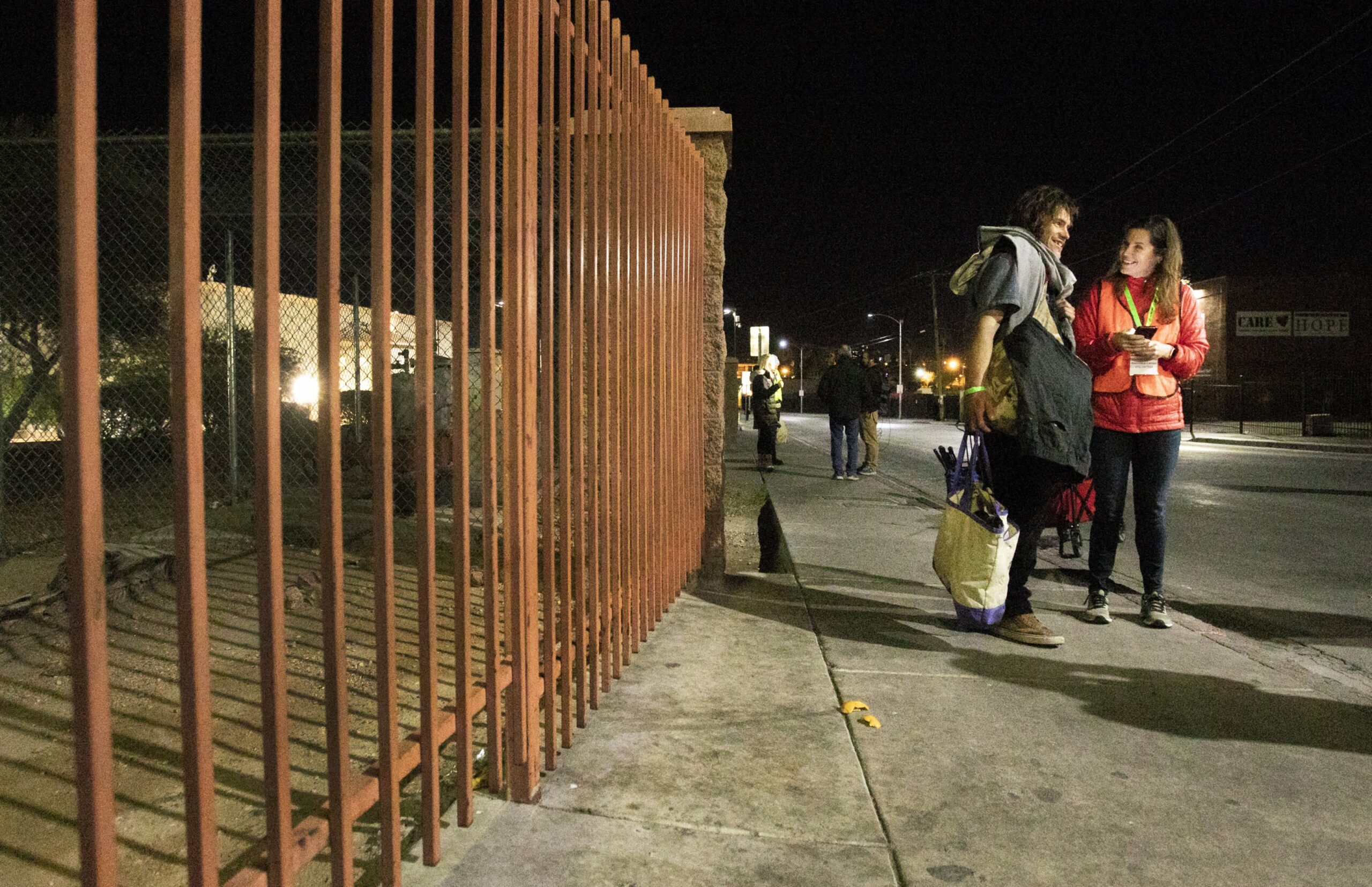
With phones and clean socks in hand, 568 volunteers set out across urban Clark County on Wednesday to get answers from reluctant subjects to uncomfortable questions including, “How long have you been homeless?”
The Point-in-Time Count is required by the U.S. Department of Housing and Urban Development (HUD) every two years, to count the number of people experiencing homelessness who are unsheltered, in emergency shelters, or in transitional or supportive housing to determine funding for that locality. The count is conducted on a single night to avoid duplicate counts. In Southern Nevada, where more than 5,500 homeless people were counted in the 2019 count, socks were offered as an incentive to complete a survey.
Volunteers were coordinated in four-hour shifts starting at 4 a.m. Wednesday, before shelters released their overnight guests, and ending at 5 p.m. the same day. At Catholic Charities of Southern Nevada, county officials briefed volunteers on physical signs of homelessness to look for, potentially unsafe areas to avoid, and how to use a new mobile app to administer surveys to collect data and information about what led individuals to homelessness.
“Too much month, not enough money,” Nick Scioli said with a laugh.
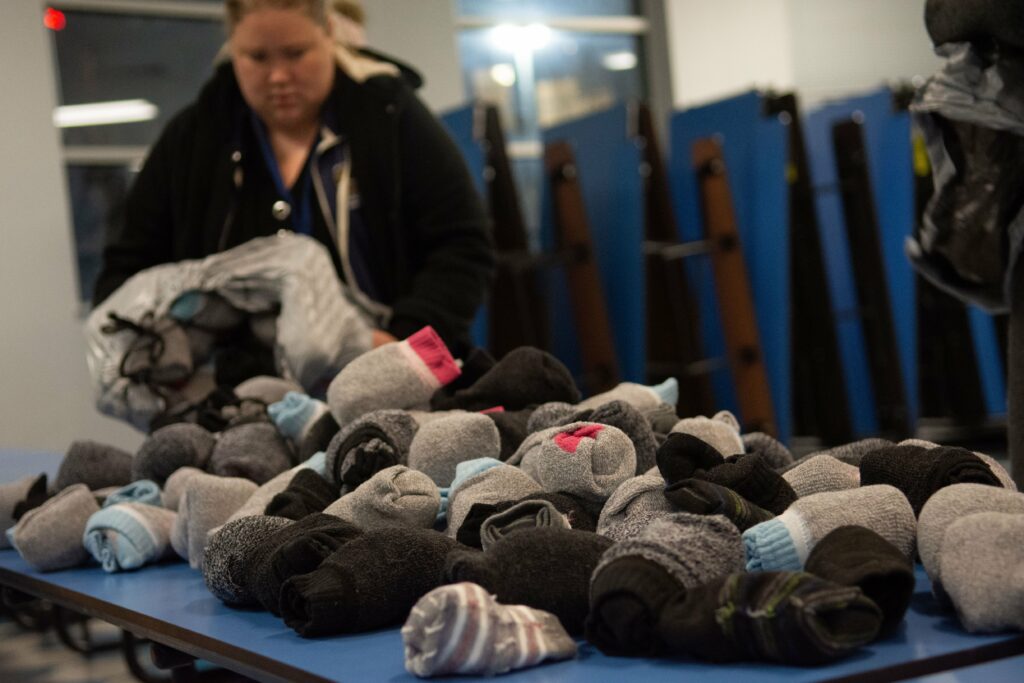
Scioli, 64, said that he and his wife, who died of cancer two years ago, were paying $705 per month to rent a place near downtown and that amount increased to $840 in a matter of months. Their combined income was not enough to keep up with the cost of living, and he became homeless shortly after she passed away.
In a wheelchair, Scioli was waiting with a few friends at the bus station in front of Catholic Charities while a census volunteer took his demographic information — age, race, gender identification, veteran status, where he slept last night, how often and how long has he been homeless.
The census came just two days before sitting or lying down on sidewalks will be punishable by a $1,000 fine or arrest, pursuant to an ordinance passed by the City of Las Vegas in November. The bill specifies that fines and arrest will not be enforceable if approved shelters — Catholic Charities, Las Vegas Rescue Mission, the Salvation Army and Shade Tree — and the Courtyard Homeless Resource Center are at “maximum occupancy.”
The Point-in-Time Count uses the HUD definition of “homeless” — lacking fixed, regular and adequate nighttime residence — so the final count will include those who slept in emergency shelters and at the Courtyard on Tuesday night.
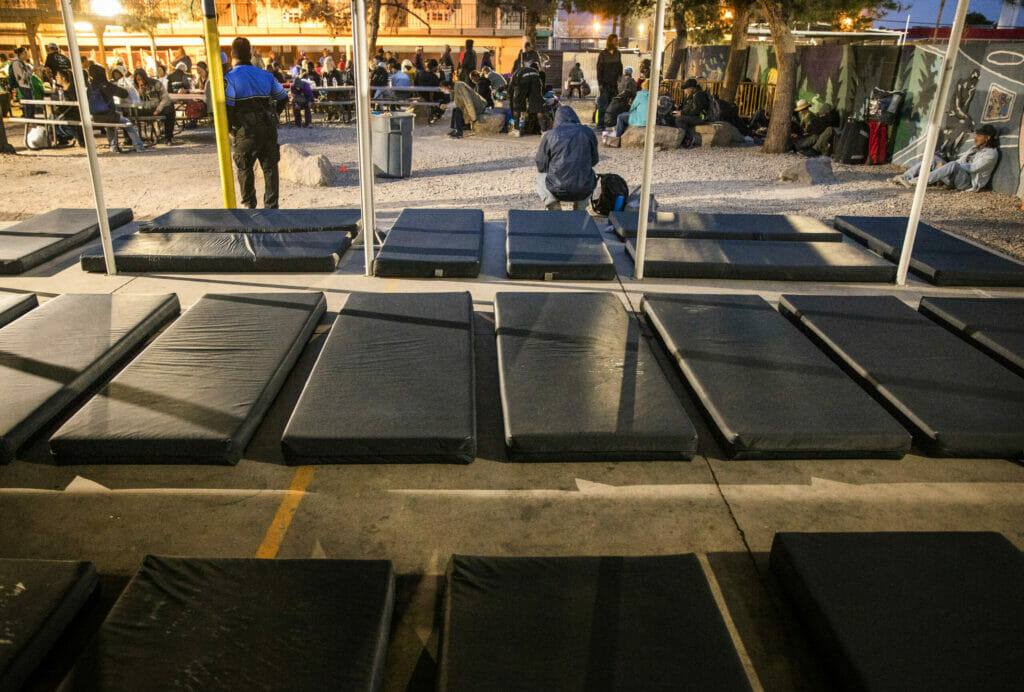
Census coordinators emphasized the importance of including “navigators,” who have been or are currently homeless, in each volunteer group. Having been in the shoes of those the census seeks to count and better understand, navigators help locate homeless individuals and try to make the presence of census volunteers and the survey less startling for subjects.
“Once you do get them up to the point where they should speak, then they don’t know what to say,” said navigator Mark Chadwick, 49. “You ask them a question and they go, ‘Where do you start?’”
Chatting with Scioli and other friends as they waited for the bus, Tom Custer, 53, said he worked in masonry for 30 years and helped build many of the big Strip properties. He became homeless after hurting his back rendered him unable to work, and said he did not qualify for disability.
Custer called the City of Las Vegas’ encampment ordinance a “stupid law.”
“It’s systematic harassment of the homeless on a Machiavellian scale,” he said, adding that police have “better things to do than police the homeless.”
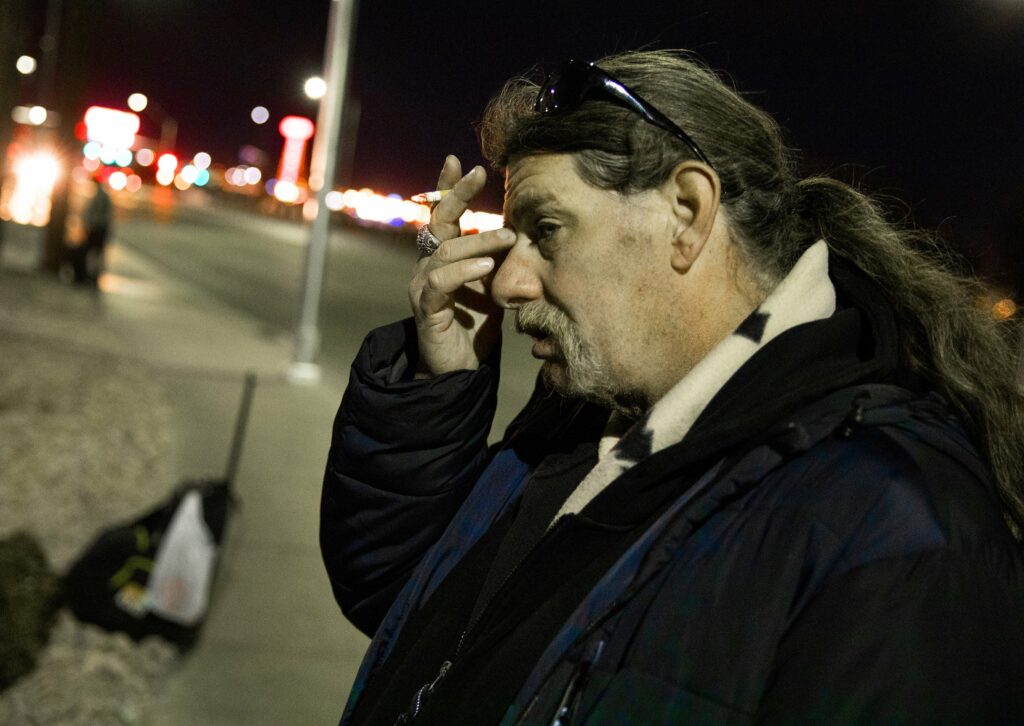
This is the first year that Point-in-Time Count used new mobile app technology, which was requested and approved by members in the Continuum of Care, Southern Nevada’s regional body that plans and coordinates funding for homeless services and housing. Homeless assistance programs in Nevada are expected to receive $16 million in federal funding this year.
Because HUD requires a census only in odd-numbered years, Continuum of Care members are testing the technology this year to determine whether they will use it in future censuses.
Unlike last year, when surveys were administered weeks following the Point-in-Time Count, the mobile app allowed volunteers to administer the surveys at the same time of the count and upload the information to a database almost instantly. According to county officials, the 2019 census surveys had a response rate of less than 7 percent of all people counted in the census.
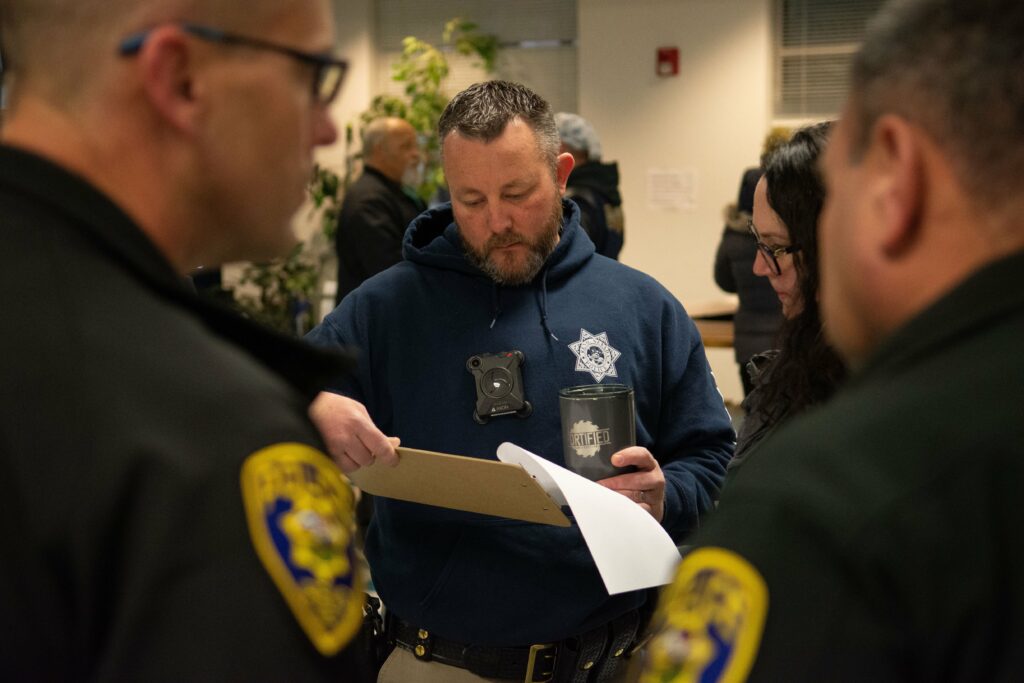
This year’s survey was divided into two sections, starting with asking whether another volunteer had already counted them (to avoid duplicates) and demographic information. A second set of questions asked about the recurrence and duration of homelessness, contributing causes such as medical conditions, drinking and drug use habits, and whether they were fleeing domestic violence.
The surveys also asked what services they had accessed in the past year and what barriers were to accessing services, such as transportation, lack of identification or necessary documentation, not enough information or a language barrier.
In Northern Nevada, the City of Reno coordinated a census on Thursday with 20 members of law enforcement and 50 volunteers from Washoe County, Veterans Affairs, Volunteers of America and homeless service providers.
According to City of Reno spokesman Jon Humbert, volunteers spread out over 33 identified “sections of town” to administer surveys with questions similar to those in Southern Nevada, asking about contributing causes to homelessness.
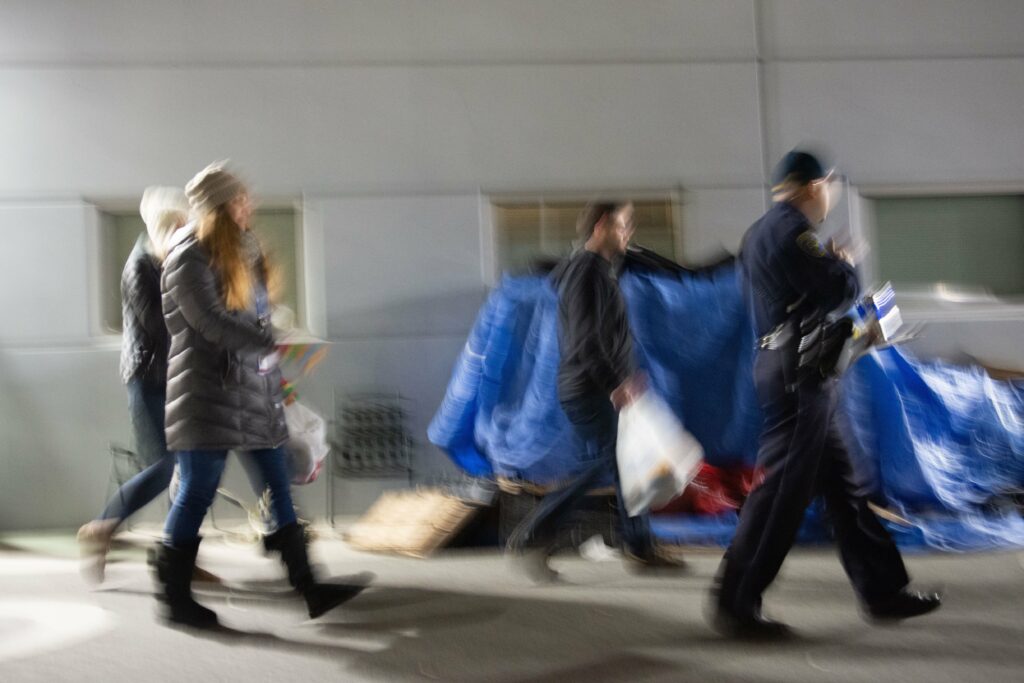
The Southern Nevada census distributed groups of volunteers to over a hundred “tracts” covering 94 percent of Clark County’s urban core. Tracts were determined by whether any homeless individual had been found there in the past three years.
“We overlay that with police, fire rescue calls and outreach calls,” said Michele Fuller-Hallauer, a social services manager for Clark County. “Areas where law enforcement and outreach teams have not found someone for three years, those are the areas that we zero out for the census,” Fuller-Hallauer said, explaining that the remaining 6 percent of the urban area will not have volunteers deployed.
Separate teams were designated to conduct the census in washes and storm drains in Southern Nevada on Wednesday and Thursday, and to conduct counts in rural parts of Clark County on Thursday. The 2019 Point-in-Time Count found 286 people, or 5 percent of the unsheltered homeless population, living in tunnels.
The census app is expected to compile census data for public information by spring, compared to mid-summer in prior years.
